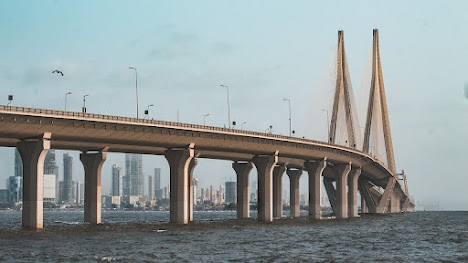MUMBAI
Mumbai, formerly Bombay, the capital of the Maharashtra region, southwestern India. It is the country's financial and commercial center and its main port in the Arabian Sea.
Located off the coast of Maharashtra, Mumbai is the most populous city in India, and one of the largest and most populous cities in the world. It was built in an ancient building, and took its name from the local goddess Mumba - a kind of Parvati, the queen of Shiva, one of the leading Hindu deities - whose temple was once part of the area now southeast of the city. Known as Bombay during the British colonial period, the name may have been the Anglicized Corruption of Mumbai or perhaps Bom Baim ("Good Harbor"), thought to be a Portuguese Portuguese name. The name Mumbai was officially restored in 1995, although Bombay remained widely used.
Mumbai, India's long-established textile industry, later developed a highly diversified manufacturing sector that included the most important part of information technology (IT). In addition, the city's commercial and financial institutions are strong and powerful, and Mumbai serves as the country's financial center. However, it is plagued by some of the chronic problems of large industrialized cities: air and water pollution, widespread poor housing conditions, and overcrowding. The latter problem is exacerbated by the visible boundaries of the city island area. An area of 239 square kilometers (619 square kilometers). Pop. (2001) 11,978,450; urban agglom., 16,434,386; (2011) 12,478,447; urban agglom., 18,414,288.
The city of Mumbai is located on the island of Bombay Island, which is made up of seven islands off the coast of Konkan in western India. Since the 17th century the islands have been linked to water projects and rebuilding, as well as the construction of roads and bridges, to form Bombay Island. To the east of the island is the protected waters of the port of Mumbai (Bombay). Bombay Island consists of low-lying plateau, about one-fourth of which is below sea level; the plain is surrounded by east and west by two adjacent hills of low hills. Colaba Point, the capital located at the extreme south of those lines, protects Mumbai Harbor in the open sea.
The western slope ends at Malabar Hill, which, 180 meters (55 meters) above sea level, is one of the highest in Mumbai. Between Colaba Point and Malabar Hill there is a shallow space of Back Bay. In a slightly elevated line between the head of the Back Bay and the harbor there is a place called Fort, the site of the 17th-century British fortresses (a little remaining) in and around the city where the city grew; the area is now inhabited mainly by public and commercial offices. From Back Bay the earth stretches northward to the central plateau. The northernmost part of Mumbai is inhabited by a large salt marshes.








0 comments